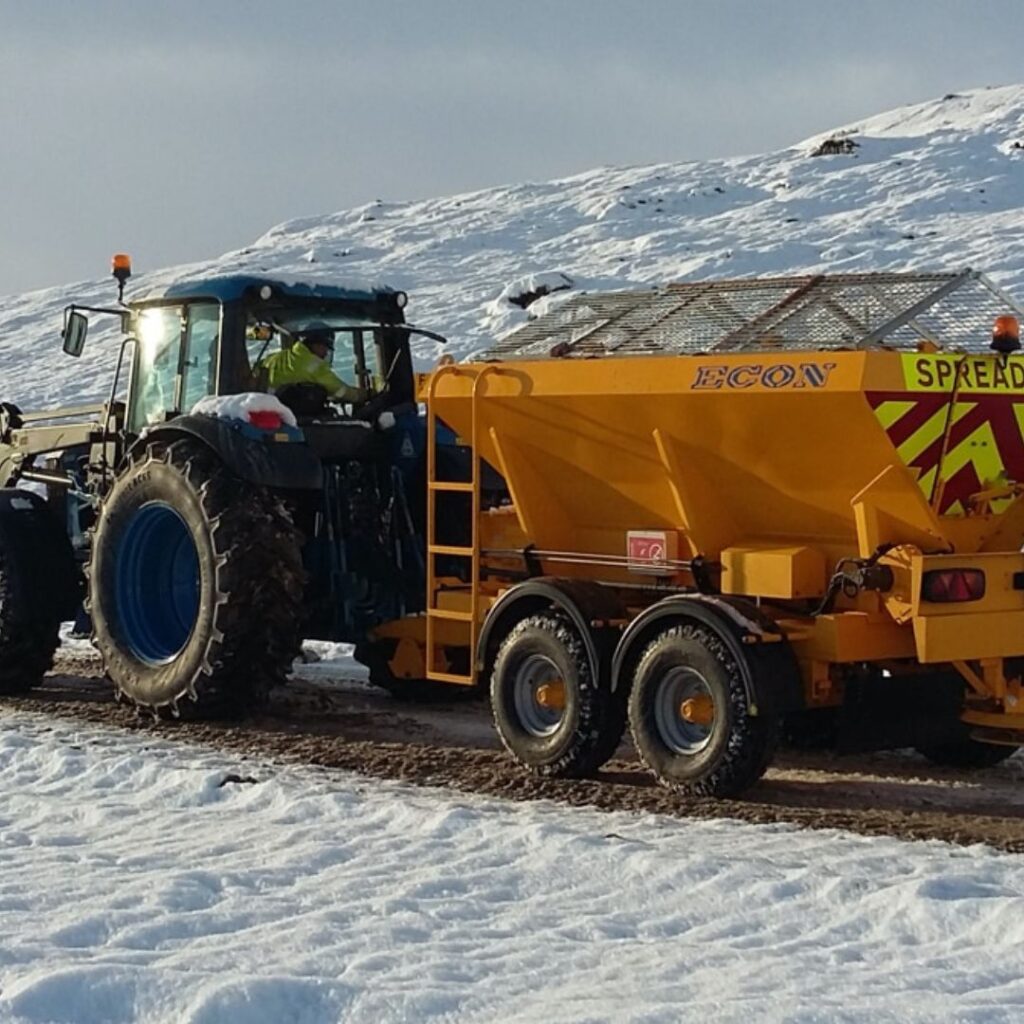
Winter may look picturesque, but icy roads, car parks, and walkways pose real risks to your staff, customers, and visitors. Slips and falls can unfortunately lead to injuries, insurance claims, and harm your reputation. With this in mind, it’s smart to have a dependable commercial gritting contract arranged to ensure that people stay protected and operations continue to run efficiently.
With various types of services and providers out there, it can be difficult to know which one is suited to your business. In this blog, we’ll explain everything you need to know, so you can select a service that’s right for you.
What is commercial gritting?
Commercial gritting is when a company spreads salt, grit, or other materials on surfaces to stop them from freezing or becoming slippery. While it sounds straightforward, professional gritting involves careful planning and timing to make sure your premises stay safe. There are two main types of gritting: proactive and reactive. Knowing the difference helps you pick the right service for your business.
Proactive gritting
Proactive gritting, also called pre-treatment, takes place before ice or snow has a chance to form. The goal is to treat surfaces early on so they remain safe and slip-free. Professional gritting companies monitor weather forecasts and ground temperatures to determine the optimal time to spread grit.
This approach is highly recommended because it reduces the risk of slips and falls, demonstrates your commitment to safety, and keeps your business open and accessible even in severe weather. As surfaces may need multiple treatments during icy periods, proactive gritting can be slightly more expensive. But the added safety and peace of mind make it a worthwhile investment.
Reactive gritting
Reactive gritting happens after ice or snow has already appeared. You call the provider, or they respond once conditions are hazardous.
Reactive gritting can be a cost-effective choice for smaller businesses, since you only pay when treatment is needed. The downside is that staff and visitors may face slippery conditions until the grit is applied, and response times can vary depending on how busy the service provider is.
How to choose the right gritting contract
Picking a gritting service is more than simply finding the cheapest option. It’s about choosing a provider you can trust to keep your site safe and running smoothly throughout winter. The right contract should fit your business’s size, budget, and level of risk, giving you peace of mind that when bad weather hits, you’re covered.
From reliability and response times to experience and environmental impact, there are a few key things to think about before signing on the dotted line. Here’s what to look out for:
1. Areas covered
Ensure the contract covers all areas you need, like car parks, pathways, and loading bays. Some contracts might leave out certain areas or charge extra, so it’s worth checking carefully.
2. How often gritting happens
Ask how often the provider treats your premises. Can they do proactive treatment when icy weather is forecast? Can they respond quickly if conditions suddenly deteriorate? Make sure they offer the flexibility your business needs.
3. Safety and insurance
The company should follow safety rules and have professionally trained staff. They should also carry public liability insurance to protect your business if someone slips or has an accident.
4. What materials are used
Salt is common; however, some providers provide eco-friendly alternatives that are kinder to the environment and won’t damage surfaces. Think about what matters most to your business – cost, safety, or environmental impact.
5. Tracking and reporting
Some providers give updates on when and where gritting happens. This can be useful for keeping records and showing that your business is taking safety seriously.
6. Emergency response
Winter weather can be unpredictable. Make sure your provider can respond quickly if ice or snow appears unexpectedly.
7. Costs
Contracts can be a seasonal fee, a per-visit fee, or a mix. Think about the cost of accidents or business disruption. Sometimes paying a bit more for reliable proactive service saves money in the long run.
Making the right choice
The best contract depends on your business. Larger sites or areas with lots of visitors might benefit from proactive gritting, while smaller sites could manage with reactive treatment. Some businesses even use a mix of both: proactive treatment for forecasted icy periods and reactive support for surprises.
Before you sign, ask for references or examples of previous work. A trustworthy provider will have a good track record and communicate clearly.
Final thoughts
Choosing the right commercial gritting contract is about protecting your people, reputation, and operations. A well-chosen contract means you sleep easier when cold weather hits, you don’t scramble last-minute, and your site stays open, safe, and fully functional.
If you start planning now, you’ll be ready. Define your needs, compare contract types, check the fine print, and choose a company that ticks all the boxes. A good winter gritting contract is an investment: not just in snow and salt, but in confidence, safety, and allowing your business to carry on without missing a beat.






